Housing in Downtown Eugene
There is an amazing opportunity in downtown Eugene to increase housing opportunities to enhance its vibrancy.
Photos taken during observation
Why are Downtowns Important?
Urban downtowns are where people live, work. A healthy downtown residential district generates a constant flow of traffic to support nearby retailers, services, restaurants and other businesses. The concentrated mix of retail, office and entertainment typical of a downtown puts residents within walking distance of most daily activities. Downtowns are also crucial for the character of the city, serving as the "living room" or placemaking center through its variety of public spaces, cultural centers, and opportunities for civic participation.
Reasons why downtowns are important include:
- Their economic significance to the city's operating budget.
- Property taxes from commercial and residential districts help fund city programs and services.
- Investing in its development typically provides a higher rate of return compared to other parts of the city.
- High private returns on public investments
- The compact housing opportunities.
- Downtown zoning usually allows a variety of higher density (also high value) land uses that is usually in demand but undersupplied.
- Private investors tend to be attracted to the higher values in downtowns as they support more efficient land use and dense development that would not be feasible in other parts of the city.
- The walkability potential in the downtown neighborhoods
- The access to public transportation to commute to work, get home, and enjoy the entertainment options is highest in downtown.
- Civic centers of community
- Municipal office buildings, courthouses, libraries and post offices are normally located in downtown.
- Create sense of belonging and community
- Cultural vitality in downtown helps to create a clear identity and improved social well-being.
- "Place attachment" which is the bond between people and place is encouraged in downtowns through events, built environment, and livability.
Ryan, B., Ward, K., & Pederson, K. (n.d.). Downtown and Business District Market Analysis: Housing. University of Wisconsin-Madison. https://economicdevelopment.extension.wisc.edu/articles/evaluating-housing-opportunities/
Vibrant Oregon Downtowns: a resource guide for small and mid-sized downtowns. (2022).
HOW HOUSING CAN HELP SUPPORT THESE GOALS
Increased housing downtown is seen as a way to work towards these goals. However
We've identified three perceived barriers to living downtown for people in Eugene:
Working Times:
-Ella, 2-4
-Marilyn, 6-8
-Zoe, June 12th, morning
-Sophie, 12-2
Why Downtown
- Citations (Marilyn)
- How housing supports these goals
- Transition to focus of our story map
- Limited housing landscape -
- Map with interview data w/summary paragraph (Ella)
- data- Housing and vacancy rates (Sophie)
- data- Demographic comparison between downtown Eugene (Sophie)
- Solutions: transit-oriented development rec of housing units to build (Sophie)
- Ratio of affordable vs. market rate units to build (Sophie)
- Discomfort in public spaces in downtown
- Map with Interview Data (Ella)
- Data- Interview data, informal interviews (Zoë has one to add to map)
- Data- Public hearing quotes (sophie)
- Arwen, Carry it Forward Interview (sophie will add)
- Solution- Write-up on why "safety" rhetoric is harmful/problematic/ why we need to change the rhetoric (Ella)
- Solutions- secure resources for unhoused folks/affordable housing development (incentive developers) (not sure where this is going yet) (Marilyn)
- Solutions- maintain relationships/build with organization (city, city workers, and unhoused community?
- Solutions- Downtown ambassadors (expand this program into outreach team for downtown)
- Solutions- social dynamics (Marilyn)
- Solutions- Martin vs. Boise (sophie)
- Reality of who wants to access the space
- Perpetuation of harmful rhetoric
- Solutions should focus on root causes
- - opportunities for housing to address? - more people to stand behind the solutions, more people downtown, take care of vulnerable populations through housing, - relationship building between housed and unhoused people.
- Misuse of term "safety" and harmful rhetoric
- /with current use
- Mis-defined of "safety"
- Misunderstandings of complex
- Unhoused aversion
- Avoidance of --
- Disagreement about acceptable behavior
- People's sense of safety downtown impacts their desire to live/visit downtown (sense of belonging)
- desire to not be near homeless people
- not dangerous, just not something you are used to
- Lack of Diversity in Urban Form and Uses
- data- Map with interview data (Ella, Zoë will add some interviews too)
- data- 20 minute neighborhood map (Zoë)
- solutions- city staff should analyze zoe's map and add missing services in resonable spatial distributions (Zoë)
- solutions- case studies (?)
- Disconnected (?)--
- Downtown is boring (more diplomatic way to say this?-- resources/activities not there/--housing support systems?) (walkability)
- Not a lot of housing types
This story map seeks to understand these barriers and suggest ways to mitigate them
A Limited Housing Landscape
Limited Housing Interview Map
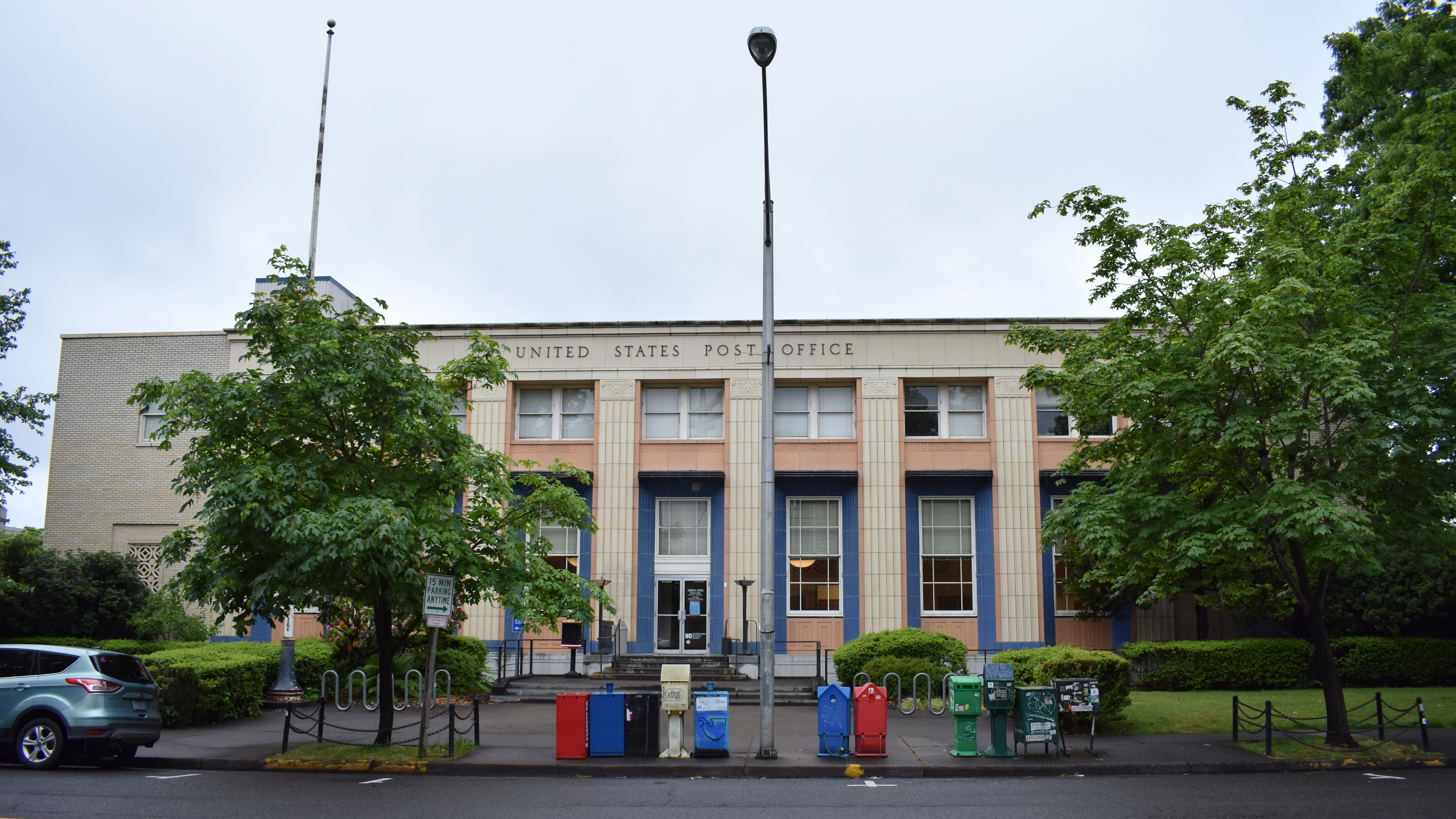
Worker Interview
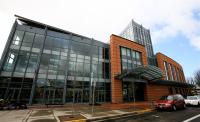
Worker Interview
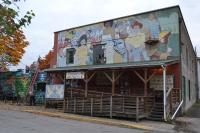
Interview at Growers' Market
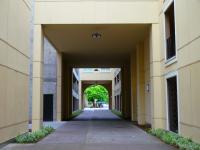
Resident Interview
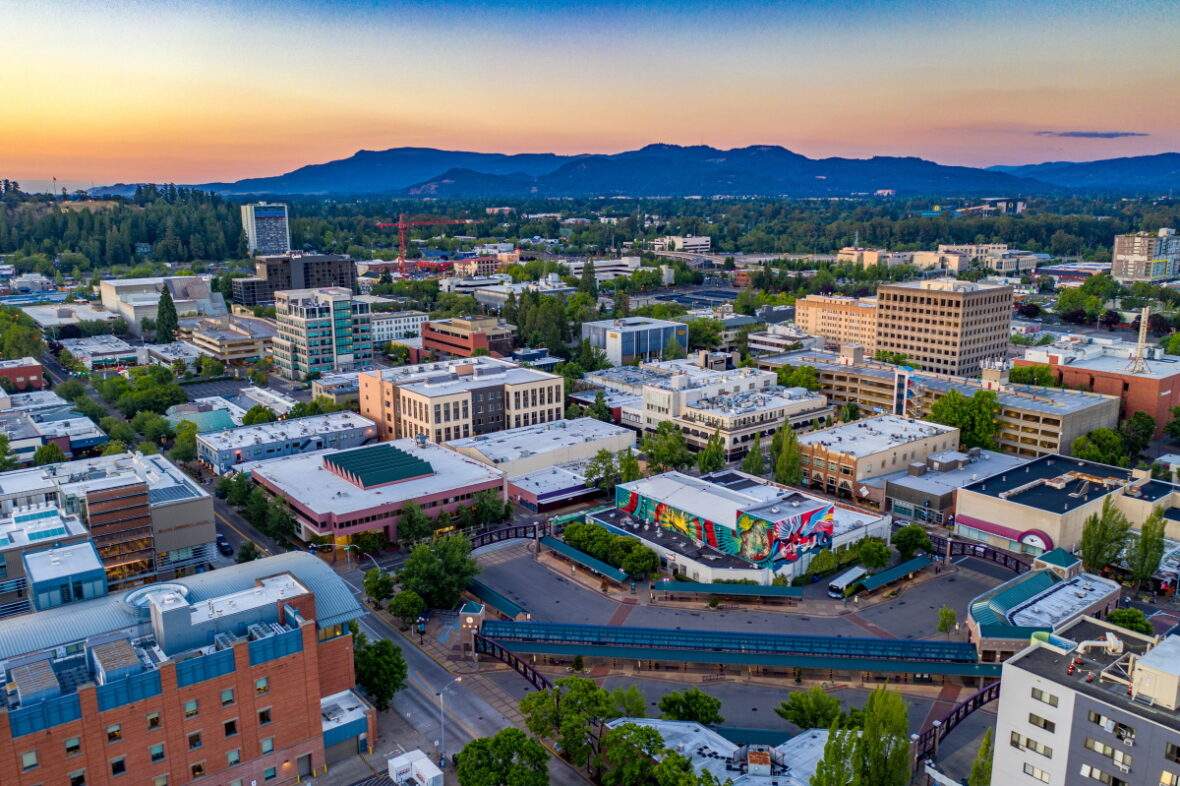
Tenant Organizer (and Resident) Downtown Eugene
Worker Interview

Resident Downtown Eugene
Summary of interviews relating to the housing landscape: Generally, the workers shared the sentiment that they did not feel like they could afford to live downtown, even if they wished to live downtown. There was a range of experiences shared, some chose Downtown to live in because it is cheaper than other parts of Eugene such as close to campus, while others cannot afford to live downtown, or there's no middle-income housing downtown. The tenant organizer described the number of evictions that they see downtown as a similar amount all over Eugene but did explain that they've noticed that Section 8 and other low-income housing is usually pretty run down or not available. They described that they've seen most people wait years to get into affordable housing places. Overall, the participants in interviews emphasized a lack of places to rent and places to live that they could afford and were available to rent, especially the minimum wage and close to minimum wage employees.
Downtown Demographics vs. Greater Eugene Demographics
If you live downtown today, you are likely a white renter, between 18-24, living with roommates, with a household income of less than $35,000/year. In fact that profile describes XX% of downtown residents.
A lively downtown means a downtown that has diversity- diversity of culture, identities, and uses throughout the day. This helps create the feel of a "lived in" space downtown (@SOURCE). And for that, we need diversity of people who have a diversity of needs and interests! So who is currently *not* represented in the demographics of downtown residents?
Demographics of Downtown now:
Demographics of Eugene (fastest growing populations- also declining popuations- are these vulnerable groups getting forced out? need a place downtown?
And what might those folks be looking for in terms of housing downtown.
Affordable vs. Market Rate Housing: a note-.
Sense of Discomfort/Safety
Sense of discomfort/safety interview map

Worker Interview
Worker Interview

Worker Interview
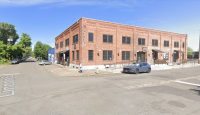
Worker Interview

Longtime Business Owner Interview
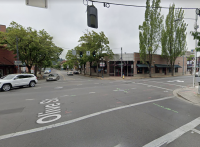
Worker Interview

Interview at Growers' Market

Resident Interview

Worker Interview

Bartender in downtown

Worker at local Bank
Summary of interviews relating to experiencing various levels of comfort downtown: Multiple people described that they don’t feel the city engages in support for the community downtown. Most people interviewed describe that they feel safe downtown. All people interviewed brought up unhoused people, in various degrees and angles without a prompt from the interviewer. People also brought up how there’s conflict, fighting, or other types of aggressive or loud behavior. This leads us to believe that the amount of unhoused people in downtown changes people’s perceptions and feelings while downtown.
Paragraph about safety perceptions needed!
Lack of Diversity in Urban Form and Uses
Diversity of Urban Form and Uses interview map

Worker Interview

Worker Interview
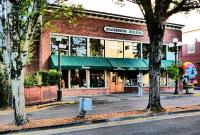
"The Main Street of Downtown"

Longtime Business Owner Interview

Interview at Growers' Market

Worker Interview


Summary of the interviews of types of urban form and uses of downtown: Some residents talked about the lack of pedestrian access and wish there were more places without car traffic, such as green spaces or places to sit and relax. Others described that they would need quietness which is not a very feasible request when there is a busy downtown. One owner wished that downtown was cleaner and had more of a retail district. Overall, there were mixed interview responses surrounding the wishes for the uses of downtown and more information is needed.
Downtown Eugene: where we are today?
Downtown Eugene has seen a lot of changes over the years- and will be changing a lot in the years to come! So what is the experience of living, working, and visiting downtown today?
We're going to walk through some quick facts about downtown, the social experience of downtown, the built environment, and the current state of housing. All of this is going to help us see what currently is working well downtown and how should downtown change to best serve the whole community of Eugene.
Downtown Eugene Perimeter
- Size: 0.6 square miles
- Number of Housing Units: 1,889
- Residents: 5,249
- Current density: 10,011 people/square mile
Sense of Belonging
The map below displays the locations we collected interview data in downtown Eugene from residents, workers, and visitors. This map attempts to answer: "How does the Eugene Community experience in Downtown today?"
Some locations are approximate to preserve anonymity. (Marilyn to add some more interviews)
Demographic Information of (Housed) People Who Live Downtown
Most people (55%) who currently live downtown are between 18-24 years old. The majority of downtown residents are
- Household income (median): $30,897
- 98.3% of people downtown rent
- 21.4% of vacancy are rentals, 0% are for sale
- 37 rental vacancies
- 0% for sale
- 0% for sale
- 55% of people who live downtown are between 18-24 years old.
- 78% are white
- 9% Latino/a/e
- 86.7% of households are non-family households
- 38% have some college
- 23% of downtown families are below the poverty line
- 4% of households receive public assistance
- 16.3% recieve retierment income
- Household sizes
- 80% of poeple have a less than 20 minute communte to work
- Over 80% of the downtown population has a median income under $50,000
housing scene
- 50% of units are 50 or more
- median rent = $948
- Median rent percentage of housing costs: 34%
Demographic Information of (Housed) People in Eugene (Sophie)
The Eugene AMI in 2022 for a one-person household was $55,800 (@affordableHousingCityofEugene)
- 3, 921 people/square mile
- Median household income: $55,776
- Ages
- Races/Ethnicities
- Household sizes
- How many people in Eugene have income 80%-120% median income (generally that's the group middle housing targets)
- what percentage of these people are currently cost-burdened
- Professions that are within this median income
- What would be affordable rents for people in this range?
45% of Eugene households (owners and renters) have incomes below 80% the Family Household Area Median Income. (@HUD_CHAS)
70% of Eugene households below 80% Family Household Area Median Income are cost-burdened. (@HUD_CHAS)
Walkability
W
- Map of location of services (Zoë)
- Layers: supermarkets, transit centers, library, community college, employment centers, cultural amenities (related to identity), open spaces, community destinations (hult, McDonald Theater, art fantastique, farmer's market pavilion, wow hall)
- Possibly: residential buildings (this seems kind of like a lot, so let's see if we have time/capacity)
- Parking Lots and surface area of parking lots (sq ft) (Sophie)
- Explanation of parking lots and housing
Housing
Existing Housing Types
- Map displaying locations and pictures of: (Zoë)
- Single Family (12th and Lincoln) converted into offices
- 10-story apartment buildings (Eugene Hotel or YaPoAh),
- mixed-use or 3-5 story buildings (Nel, Commons, Tate)
- small-block apartments (Wilder Apartments -brick at 13th/High),
- plexes (usually hidden, one next door to Cafe Soriah at Lawrence/13th),
- student housing (large/dense, "Texas donut" building type with massive garage at center of development block),
- townhouses (at base of Skinner Butte),
- garden apartments (Broadway Apartments),
- live-work plus AH (WestTown)
- Summary paragraph that talks about which types of housing that appeal to different populations (Sophie)
- Rents and Homeowner costs of people living downtown (Sophie)
Existing Affordable Housing Options in Downtown Eugene
The City of Eugene defines "affordable housing" as housing costs that account for no more than 30% of a households gross earnings (@affordableHousingCityofEugene). Spending more than 30% earnings on housing costs makes a household "cost burdened".
% of Eugene Low Income Housing Units Located Downtown
Currently, downtown has 704 subsidized housing units. This accounts for about 17% of all subsidized units in Eugene.
% of Low Income Housing to Market-Rate Housing City Overall vs. Downtown
About 37% of downtown housing is low income housing. Citywide, about 16% of total housing units are low income.
The map below shows the current subsidized housing options in downtown Eugene and their availabilities as of May 27th, 2023.
Data from eImpact Report for Downtown Eugene on Affordable Housing. Affordable Housing options are shown here from the eImpact Report, the majority of these units rent at 30% of tenant's income.

The Nel
45 units. Homes for Good, adjusted at 30% of income (capped). Waitlist, no availability. Section 8 Housing.
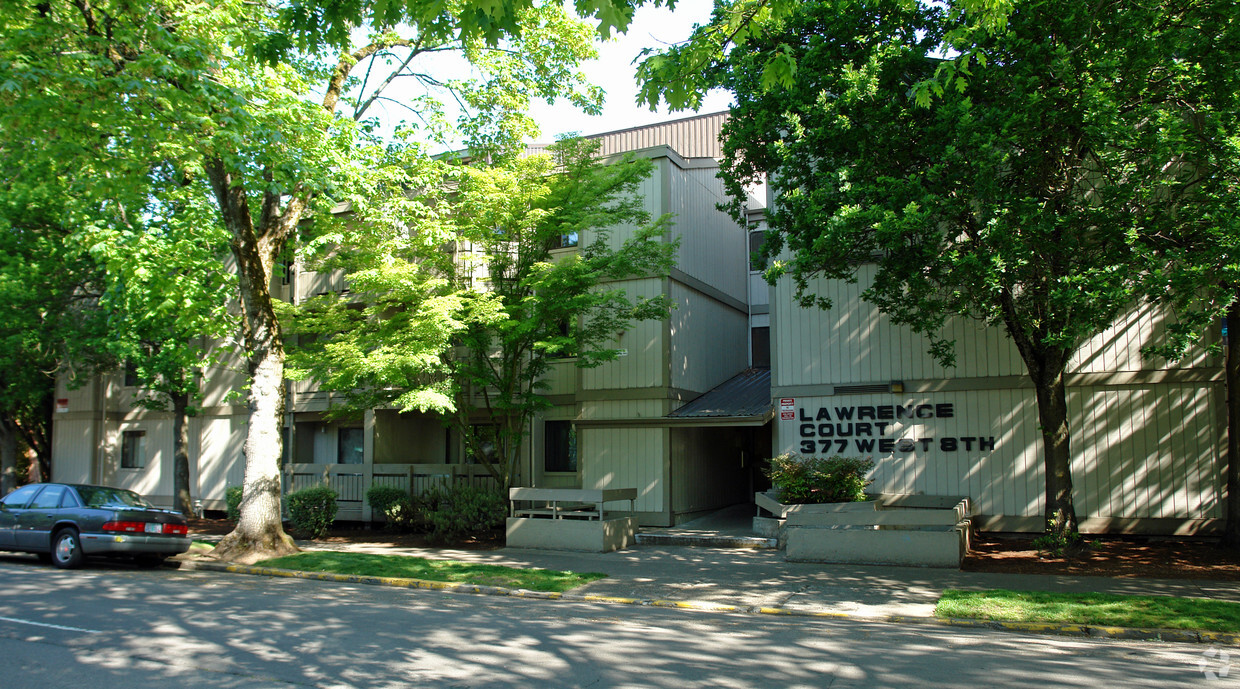
Lawrence Court Apartments
51 units. Section 8. This apartment accepts HUD subsidies. Rent is based on 30% of your Adjusted Gross Income. Waitlist, no availability.
Aurora Building
St Vincents Owned. 54 units. Residents must apply and meet income and selection criteria for affordable housing. Mixed-income. The rents are affordable to persons at or below 50 and 60 percent of the area median income. No availability. Closed waitlist.
Mary Skinner Apartments
St Vincents Operated. Residents must apply and meet income and selection criteria for affordable housing. Also includes mixed-income, 40 units at 50 median income. No availability. Waitlist closed.
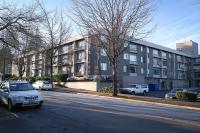
Parkview Terrace
150 units, offers 1 and 2-bedroom units for Seniors and people with disabilities. No availability.
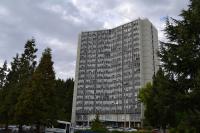
Ya-Po-Ah Terrace
222 units. Tallest building in Eugene. Retirement apartments. Sliding scale rent at 30% of income (capped). No availability.
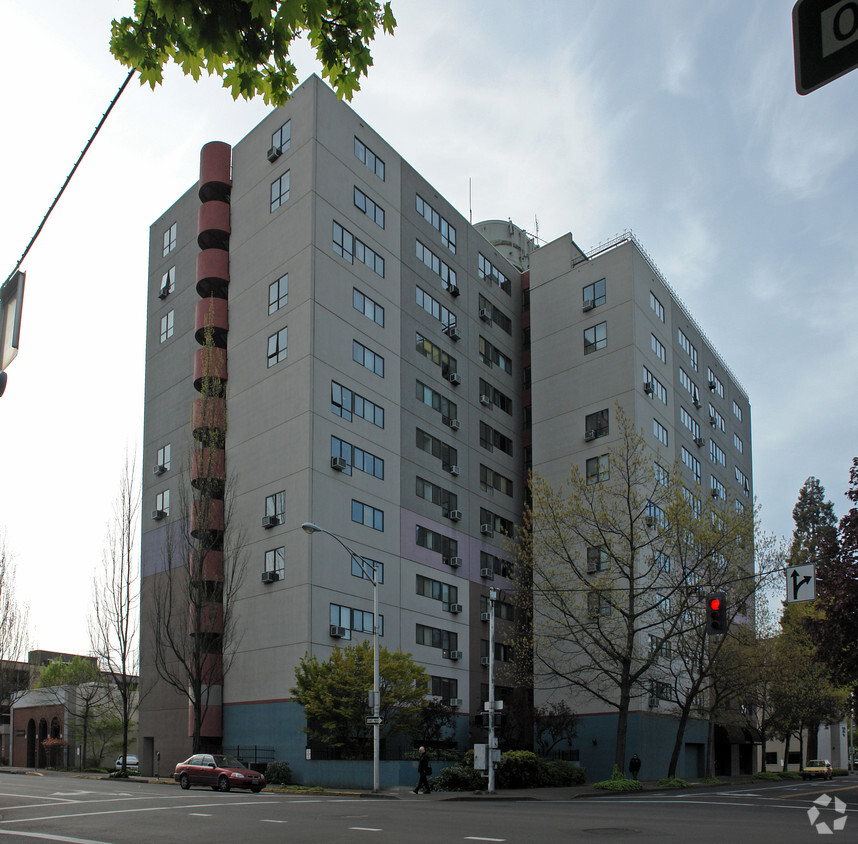
Olive Plaza
150 units. Age 62+ and people with disabilities. No availability.
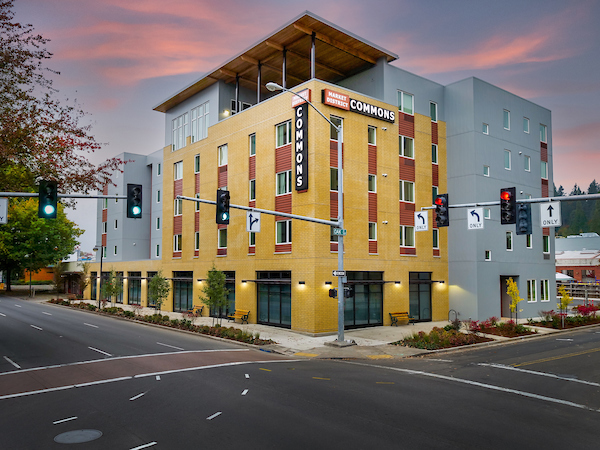
Market Commons
Homes for Good Project with mixed-income. 50 units, with 15 units set aside for PBV with affordable rent (capped). Waitlist.
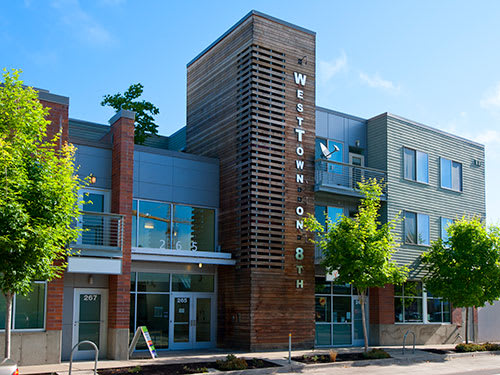
WestTown Cornerstone Community Housing
Funded and operated by Low Income Housing Tax Credit, HOME, and Conduit Bond. 100 units. Students allowed. Waitlist.
Currently, in Downtown there are a little over 700 units available for low-income, subsidized, or Section 8 residents in Eugene. There is a 100% occupancy rate and many waitlists are closed and not currently accepting new applicants. Ya-Po-Ah Terrace and Olive Plaza specifically serve older community members and people with disabilities. Additionally, WestTown is a more recent development and has some targeted information for students. The financing of the apartments is not accessible information. There are some limitations on accuracy but based on the information found, the majority of the apartments are paid for through HUD, Conduit Bonds, Low-Income Housing Tax Credits, and HOME. Most federal and state funds for subsidized housing go to people earning less than 80% of the Area Median Income (AMI) (@HUDPublicHousing). The City of Eugene recognizes people earning less than the AMI are "very likely to be adversely affected by housing costs". (@affordableHousingCityofEugene). In addition to the 800 units, there are plans for 200 more units in the 5th Street market, but the units are not yet developed
What's Working and Not Working?
Affordability and Choice (Sophie)
- Not a lot of housing vacancy
- especially for people who want to buy homes
- Not enough affordable housing to meet the need, but more affordable housing than other locations in Eugene
- Not a very diverse housing mix
Safety (sophie)
- A need for more educated rhetoric on what the problems are downtown and who is perpetuating them
- Anti-social behavior, safety, poverty, homelessness, drug addiction, and crime are all being conflated in popular discourse, including by city leadership
- (public hearing quotes)
- Desire for compassionate responses
- Eugene survey (not an increased police presence)
- Downtown ambassadors
Belonging (Sophie)
- limited activities, especially across times of day activities
- Bars (evening/night life)
- Limited green space
Farmer's Market Pavillion & Saturday Market (Place-Making)
City of Eugene Current Tools, Projects, and Solutions
What is the city of Eugene currently doing to address these issues?
"The downtown housing vacancy rate has been at or near zero for many years, but there has been virtually no new construction. This points to some basic economic deficiencies—generally, the cost of new construction is high and the local market rents are too low to support the cost of dense construction." Multi-Unit Property Tax Exemption | Eugene, OR Website (eugene-or.gov)
Incentives for Development in downtown
- Multi-Unit Property Tax Exemption (MUPTE)
- It is a state-enabled program designed to be an incentive of redevelopment in city centers and transit corridors.
- MUPTE is only allowed in the downtown area, and it allows for new multifamily units to avoid property taxes on the value of new residential construction for up to 10 years
- Most developers building in downtown are applying for MUPTE and paying a fee which then contributes to increasing housing affordability, availability, and diversity of type.
- Downtown Urban Renewal Plan
- Urban renewal, also known as the Tax Incremental Financing tool, is used by municipalities to finance improvements and redevelopment in specific areas. For Eugene, these areas are the Downtown Urban Renewal District and Riverfront Urban Renewal District.
- The proposed amendment to the plan identifies three focus areas of possible projects which include housing, physical improvements, and emerging projects directed or initiated by the agency board.
How does MUPTE and the Downtown Urban Renewal Plan address affordable housing and the housing crisis?
The City can use MUPTE to build housing and then invest that into partnering with agencies who make units only available to individuals and families typically earning less than 60% of area median income. Urban Renewal Funds can be used by paying for land acquisition for the development of housing and offering financial assistance to cover the costs of permits and fees for development of new housing in downtown.
Aspirations, Goals, and Community Priorities
"A high priority action item within the Eugene Climate and Energy Action Plan is to increase density around the urban core and along high-capacity transit corridors. National data show that individuals living in city centers drive, on average, fewer miles than individuals in other parts of a community. Downtown is walkable, has good access to transit, and offers goods and services for residents’ daily needs. More residents in the downtown will result in lower per capita carbon emissions and other automobile emissions (including carbon monoxide, nitrogen oxides, sulfur oxide, and particulate matter)." Frequently Asked Questions • Eugene, OR • CivicEngage (eugene-or.gov)
"I believe about 5,000 - 7,000 more residents in downtown would help the small businesses in downtown and it would make it feel safer."
Owner of the KIVA grocery store
Downtown Priorities and Projects
There are six categories the City would like to address through its downtown priorities and projects. The categories are Housing, Public Safety, Social Services, Commercial Activity & Development, Public Spaces & Mobility, and Events & Culture. The priorities and projects were recommended through broad outreach to stakeholders and focus groups. There are project examples listed in the draft list that are eligible for urban renewal funds which shows how the city is planning to make downtown more vibrant. DTPP-Draft-List_2023-01-25 (eugene-or.gov)
Planned and Proposed Projects
1059 Willamette Street
The proposed project will be called the "Montgomery." It will be a six-story building with 66 rental units that are ‘income-qualified’ and available to households at 80% of Eugene’s area median income (AMI), and 63 rental units that are ‘market-rate’, which means there is no income restriction. 10 of the income-qualified units will be set aside for victims of domestic violence, in partnership with Womenspace , a Eugene-based non-profit that provides women-centered services to victims and survivors of domestic and sexual violence. Resident services provided by Cornerstone Community Housing through their Healthy Homes program, which supports interventions and services that promote housing access, retention, and stabilization. The ground floor, facing Willamette Street and 11 th Avenue will include commercial space, offered at low rents and available to start-up businesses. And finally, a public gallery and Pet-care areas, to exercise and wash dogs. Frequently Asked Questions • Eugene, OR • CivicEngage (eugene-or.gov)
Riverfront District
The planned project is under the developer Atkins Dame who started construction on the “Heartwood” project in August 2022. It is located along 5th Avenue. The first building will be four stories with 95 market rate apartment homes and is expected to be completed in early 2024. The “Portal” project, will be a new community with 130 market rate apartment homes, is scheduled to start this year and is located on the southwest intersection of 4th Avenue and Mill Street. There is also a current application for a lot adjacent to these projects under MUPTE for a proposed 237-unit development on 4th and High Street. Downtown Riverfront | Eugene, OR Website (eugene-or.gov)
The Station House at the Market District
This proposed project is a current application for the MUPTE tax exemption mainly targeting an active 55 and older community. It will also be a housing opportunity for families. The project is proposing 176 units in the same area as the 5th Street Market. Part of the rent will help pay for services such as meal services, transportation, 24-hour staffing, on site security, and social programming.
"Market Rate Housing would have more positive effects on the economy downtown. Healthy neighborhoods have mix of income."
Quote from Downtown Manager
Why Invest in Downtown? What Could it Do?
Our Recommendations
- Housing is an important factor in improving place-making (Marilyn) - from our interviews with people who work in downtown.
- Fitting in Small Businesses. The owner of the KIVA grocery store spoke to us about
- Activated Dead Space
- Placemaking builds from “place attachment”—the bond between people and places—in the process of creating quality places where people want to live, work, and play.
- A key goal of placemaking is to create greater economic, social, and cultural vitality in rural communities aimed at improving people’s social, physical, and economic well-being
- Improving Social Tensions (Marilyn.. sophie has a few ideas too) - From city people and case studies
- “Social Dynamics”: Perceptual dynamics, Relational dynamics, and Influence and power dynamics
- “Income mixing also aims to promote the economic and social interaction of low-income families within broader community, thereby providing greater opportunities for the upward mobility of such families.”
- Compassionate responses to distress- A downtown for e v e r y o n e !
- De-criminalize poverty and houselessness (Martin vs. Boise)
- Middle Housing to bridge the income gaps - The need to increase middle housing types to address the housing crisis
- Courtyards, Closes, and Other Forgotten Housing Types
- Neighborhood Identity Space Streets as Social Seams Softened Strong Edge
- Urban Design
- Design is one of the most important features in mixed-income neighborhoods
- This diversity can accentuate the meaning and implications of physical design: boundaries can take on special significance, connectivity can clash with a heightened need for privacy, and visual coherence can conflict with diverse tastes and styles.
- Design affects the quality and means of social connection. For example, a neighborhood that is walkable and pedestrian-oriented tends to include public spaces that support casual or spontaneous interactions, and more social interaction might lead to a greater sense of community, social capital, and collective efficacy—effects that are especially important in
- mixed-income areas
- "Fast Casual Architecture" Gentrification Building
- A key goal of placemaking is to create greater economic, social, and cultural vitality in rural communities aimed at improving people’s social, physical, and economic well-being.
Future Considerations and Questions
- Gaps in the data
- Climate Friendly and Equitable Communities
- Parking
What are other incentoves for developers?
What are the kinds of partnerships?
Trauma informed community building: A model for strengthening Community in Trauma Affected Neighborhoods in a post covid downtown
Brain Dump
Place-Making
Safety
Define Place-Making
- Need a clearer, more targeted, definition of what the safety problems are downtown
- Conflation of poverty, crime, houselessness, and addiction
- Problematic city scape-goating of houselessness
- Realistic discomforts with behavior downtown/description of what we see as downtown safety issues
- Community Solutions
- What do people we interviewed think should be done? (Implement comprehensive strategies including social services, affordable housing, and restorative justice.)
- Suggested metrics (??????)
Diversity
- Diversity of activities for different ages
- Ensure affordable and accessible recreational activities, public spaces, and services cater to residents from all socioeconomic backgrounds and promote inclusion and representation of underrepresented communities.
- Diversity of cultural experiences/presence
- Suggested metrics (????)
History of Downtown Planning - Timeline (?)
- Eugene was established in 1853, but people lived here for time immemorial before than
- More accurate portrayals/acknowledgments of race-based exclusion
- Beyond "Track Town" USA
- History of Political/environmental/social activism
- (??)